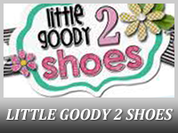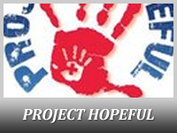Even though our family is adopting a "healthy" infant, we've learned a lot about HIV/AIDS along the way. The disease is one of the main causes of orphaned children in Ethiopia. Before we started this process we didn't realize just how very, very little we knew about HIV. A lot of what we've learned has surprised us.
Here is a post from the blog of Bryan and Laura Unruh a family pursuing an HIV+ adoption...
HIV Facts and Myths
"Don't spend time worrying about weird and obscure ways of transmitting the virus. The simple fact is that if no one shared needles and everyone wore condoms, the HIV epidemic would disappear." - Joel Gallant, M.D., M.P.H., Professor of Medicine & Epidemiology in the Division of Infectious Diseases and Associate Director of the Johns Hopkins AIDS Service at The Johns Hopkins University School of Medicine
HIV stands for Human Immunodeficiency Virus, and it is the virus that if left untreated, can progress and develop into AIDS. AIDS stands for Acquired Immune Deficiency Syndrome, and occurs when HIV advances and weakens the immune system to the point that the body can no longer fight off illness and infections.
There is currently no cure for HIV or AIDS, however, the medications that are now available to treat HIV are highly effective. HIV is now considered a chronic yet manageable condition in the United States and in other countries where treatment is readily available. Children who receive the proper treatment and medications are expected to live well into adulthood and have close to normal or normal life expectancies, and many people are now living with HIV for indefinite periods of time without developing AIDS.
While the term "HIV+ child" usually makes people imagine a child that is very sickly, the reality is that children who are HIV+ and are receiving the medications, look just like any other child.
When HIV+ children are receiving proper care and are on their medications (when needed), they enjoy very good health and do not need to be isolated from other children or be treated differently.
HIV+ children are NOT a risk to people around them, as HIV can NOT be spread through causal contact. HIV is not spread through hugging, kissing, shaking hands, sharing toys, sneezing, coughing, sharing food, sharing drinks, bathing, swimming or any other causal way.
"In the past 16 years (since the introduction of life saving ARV medications for people with HIV) there has not been one single case of accidental transmission of the virus, even among household members who eat, drink, play, and even bleed together sometimes!
-Center for Disease Control"
It has been proven that HIV and AIDS can only be spread through sexual contact, birth, breast milk and blood to blood contact (such as sharing needles). Children who are HIV+ can share food, drink, bath tubs, swimming pools, towels, beds, toys and all other household items with their family members and friends without risk. HIV is not transmitted through urine, stool, snot, tears or sweat.
While it is recommended and wise to handle the blood of an HIV+ child with care and use universal precautions, it is also helpful to know that the risk of transmitting HIV through a bloody nose or skinned knee is very, very minimal. This is especially true for a child that is on HIV medications, because the medications can reduce the amount of HIV in a person's system to the point that the HIV is considered "undetectable", meaning there is only a very tiny amount of virus in the person's system.
Fore more detailed information you can visit:
http://www.thebody.com/content/whatis/art30024.html#q15 or
http://www.cdc.gov/hiv/resources/factsheets/transmission.htm
Here is a post from the blog of Bryan and Laura Unruh a family pursuing an HIV+ adoption...
HIV Facts and Myths
"Don't spend time worrying about weird and obscure ways of transmitting the virus. The simple fact is that if no one shared needles and everyone wore condoms, the HIV epidemic would disappear." - Joel Gallant, M.D., M.P.H., Professor of Medicine & Epidemiology in the Division of Infectious Diseases and Associate Director of the Johns Hopkins AIDS Service at The Johns Hopkins University School of Medicine
HIV stands for Human Immunodeficiency Virus, and it is the virus that if left untreated, can progress and develop into AIDS. AIDS stands for Acquired Immune Deficiency Syndrome, and occurs when HIV advances and weakens the immune system to the point that the body can no longer fight off illness and infections.
There is currently no cure for HIV or AIDS, however, the medications that are now available to treat HIV are highly effective. HIV is now considered a chronic yet manageable condition in the United States and in other countries where treatment is readily available. Children who receive the proper treatment and medications are expected to live well into adulthood and have close to normal or normal life expectancies, and many people are now living with HIV for indefinite periods of time without developing AIDS.
While the term "HIV+ child" usually makes people imagine a child that is very sickly, the reality is that children who are HIV+ and are receiving the medications, look just like any other child.
When HIV+ children are receiving proper care and are on their medications (when needed), they enjoy very good health and do not need to be isolated from other children or be treated differently.
HIV+ children are NOT a risk to people around them, as HIV can NOT be spread through causal contact. HIV is not spread through hugging, kissing, shaking hands, sharing toys, sneezing, coughing, sharing food, sharing drinks, bathing, swimming or any other causal way.
"In the past 16 years (since the introduction of life saving ARV medications for people with HIV) there has not been one single case of accidental transmission of the virus, even among household members who eat, drink, play, and even bleed together sometimes!
-Center for Disease Control"
It has been proven that HIV and AIDS can only be spread through sexual contact, birth, breast milk and blood to blood contact (such as sharing needles). Children who are HIV+ can share food, drink, bath tubs, swimming pools, towels, beds, toys and all other household items with their family members and friends without risk. HIV is not transmitted through urine, stool, snot, tears or sweat.
While it is recommended and wise to handle the blood of an HIV+ child with care and use universal precautions, it is also helpful to know that the risk of transmitting HIV through a bloody nose or skinned knee is very, very minimal. This is especially true for a child that is on HIV medications, because the medications can reduce the amount of HIV in a person's system to the point that the HIV is considered "undetectable", meaning there is only a very tiny amount of virus in the person's system.
Fore more detailed information you can visit:
http://www.thebody.com/content/whatis/art30024.html#q15 or
http://www.cdc.gov/hiv/resources/factsheets/transmission.htm








 RSS Feed
RSS Feed